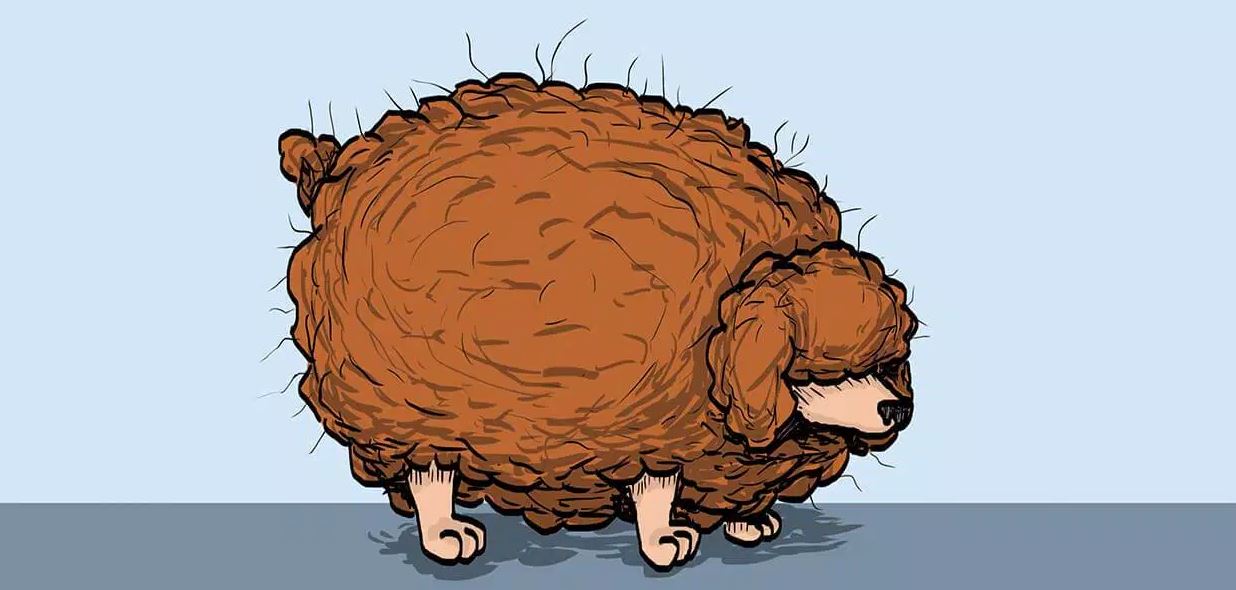
(From the November 13, 2015 issue of “Groomer to Groomer” magazine, www.groomertogroomer.com, by Jennifer Adolphe, PhD, RD)
Weighty Matters: When Fluff Hides the Flab
When Healthy Becomes Hefty
Groomers are a key member of a pet’s care team and can help pet parents identify when there might be just a little bit too much flab underneath all of that fur. Even a small amount of weight gain has been shown to decrease dogs’ lifespan by about two years. Having the weight conversation with pet parents is much easier when you can provide your clients with some sound suggestions and solutions.
Why Pets Pudge?
A first step is for owners to understand what causes pets to gain weight. For many pets, it is a result of too little exercise, too much good food, and an excess of treats. Also, there are some dog breeds that are more prone to weight gain, particularly those breeds that are more likely to be lying on the couch than climbing mountains.
What Does a Fit Pet Look Like?
A fit pet has an hourglass body shape when viewed from above, a slight tummy tuck, and a thin covering of body fat over the ribs and spine. When running your hands along a pet’s body, you should be able to feel the ribs and hips without pressing hard.
Tipping the scales
If you think a pet needs to shed a pound or two, the owner should speak with their vet to help determine the pet’s ideal body weight. It is easy to check a pet’s progress at home. Simply get on a home scale holding the pet and subtract your weight from the total amount. No cheating!
Weighing out a pet’s food using a kitchen scale is much more accurate and allows for small adjustments to the daily amount fed. A 1-2 percent body weight loss per week is just right, as a rapid decline in weight can be harmful to the pet. If too much or too little weight has been lost during the previous week, adjust the amount of food until a slow and steady weight loss is achieved. Continue adjusting food intake and assessing body condition weekly until the pet reaches an ideal body weight.
Treat Smart
Who doesn’t like to reward their pets? Most pets become very adept at asking for them on a daily basis. Treating is great for training and bonding with pets, but it needs to be done in moderation. When choosing a treat, look for whole food, natural ingredients. Another option is to offer healthy, low-calorie, whole food snacks such as cut carrots and apples. Pets get to munch and crunch without putting on extra pounds.
Dogs are What They Eat
If your pet needs to lose a bit of weight, a food specially formulated for weight loss may help. Remember that the feeding guidelines on the bag are simply a place to start. Energy requirements of pets can vary tremendously, even between pets of the same weight, so it is important to adjust how much you feed based on the amount needed to maintain an ideal body weight.
Groomers play an important role in helping pet parents learn how to assess their pet’s weight and keep their dogs fit. And as these dogs slim down, the owners may just notice a more pawsitive and energetic companion.
